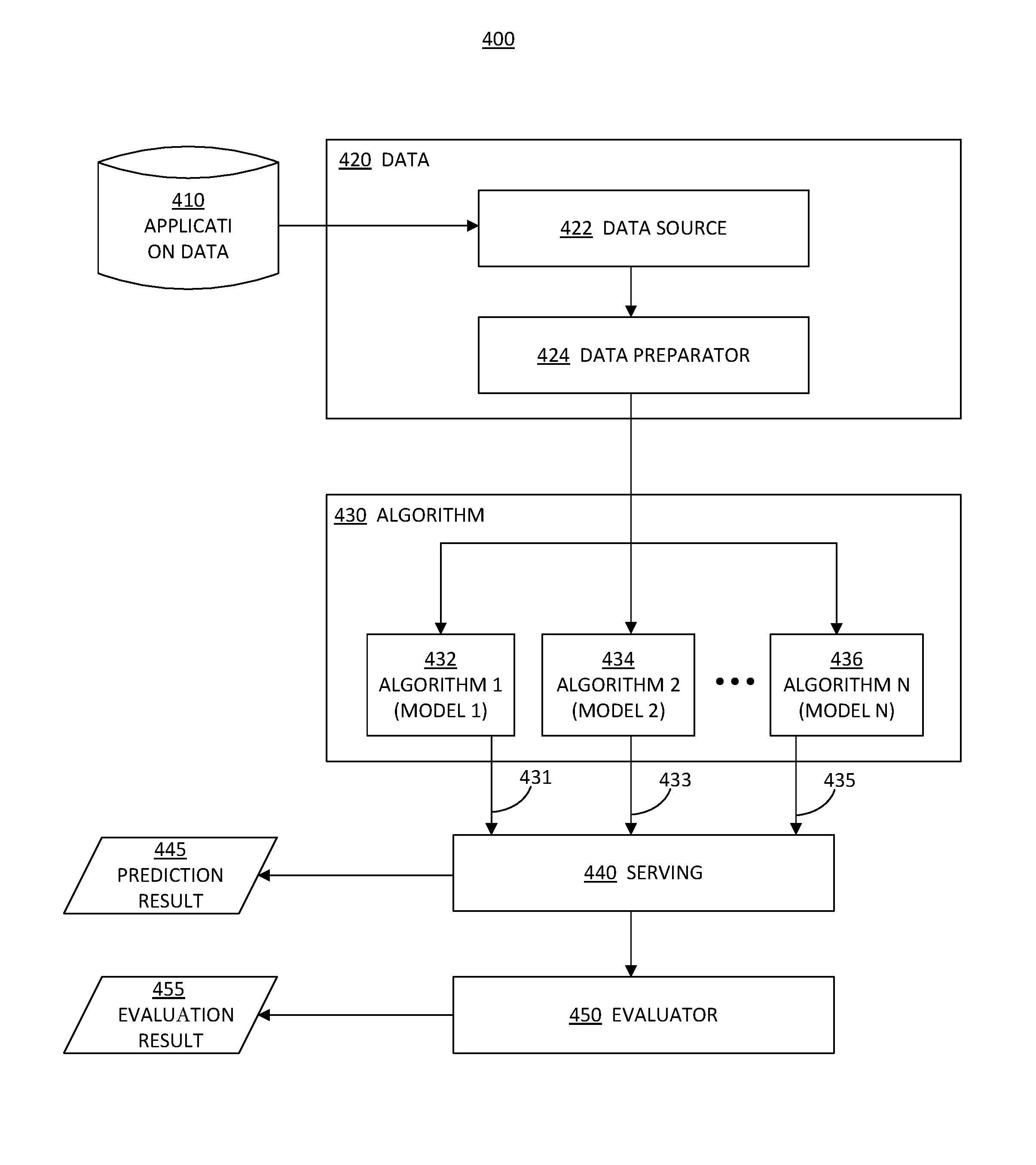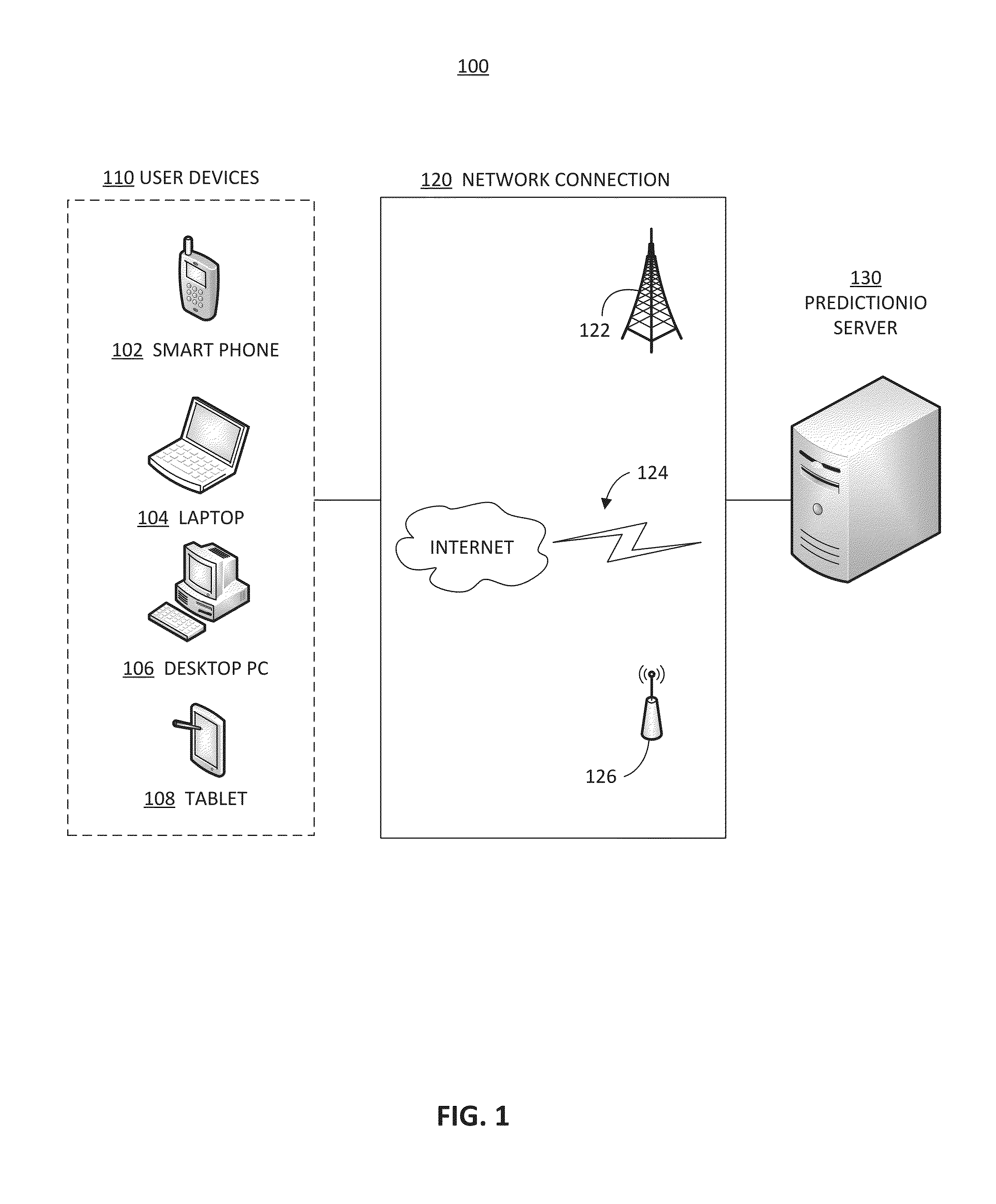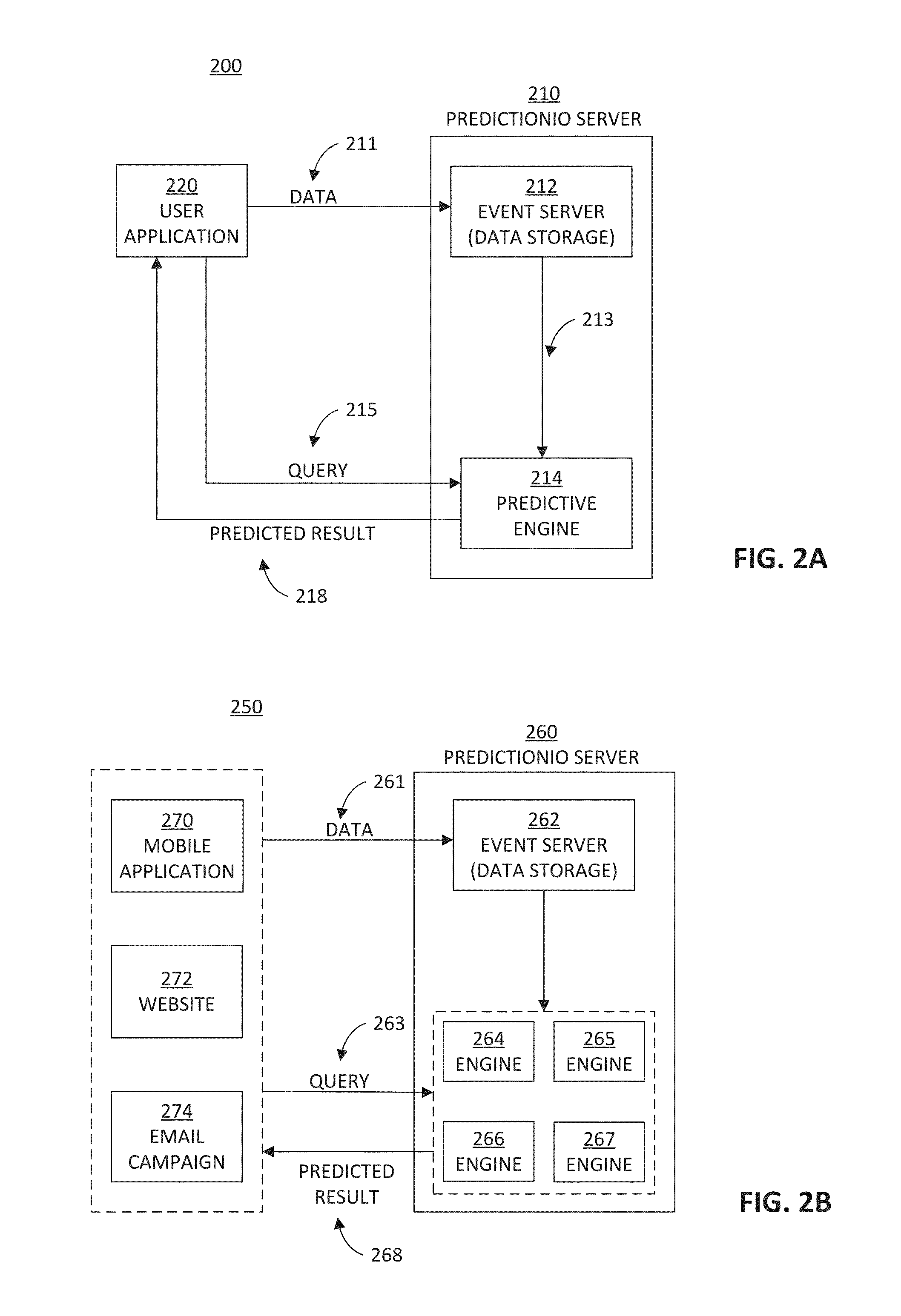Methods and systems for visual replay of predictive engine performance
a predictive engine and visual replay technology, applied in the field of methods and systems for visual replay of predictive engine performance, can solve the problems of difficult to identify the causes of inaccurate prediction and difficult to track sequences of events in depth
- Summary
- Abstract
- Description
- Claims
- Application Information
AI Technical Summary
Benefits of technology
Problems solved by technology
Method used
Image
Examples
example
[0181]Let's take a classic recommender as an example; usually predictive modeling is based on users' behaviors to predict product recommendations.
[0182]We will convert the data (in Json) into binary Avro format.
[0183] / / Read training data
[0184]val trainingData=sc.textFile(“trainingData.txt”).map(_.split(‘,’) match { . . . })
[0185]which yields something like:
[0186]user1 purchases product1, product2
[0187]user2 purchases product2
[0188]Then build a predictive model with an algorithm:
[0189] / / collaborative filtering algorithm
[0190]val model=ALS.train(trainingData, 10, 20, 0.01)
[0191]Then start using the model:
[0192] / / collaborative filtering algorithm
[0193]allUsers.foreach user=>model.recommendProducts(user, 5)}
[0194]This recommends 5 products for each user.
[0195]This code will work in development environment, but wouldn't work in production because of the following problems:[0196]1. How do you integrate with your existing data?[0197]2. How do you unify the data from multiple sources?[0198]...
PUM
 Login to View More
Login to View More Abstract
Description
Claims
Application Information
 Login to View More
Login to View More - R&D
- Intellectual Property
- Life Sciences
- Materials
- Tech Scout
- Unparalleled Data Quality
- Higher Quality Content
- 60% Fewer Hallucinations
Browse by: Latest US Patents, China's latest patents, Technical Efficacy Thesaurus, Application Domain, Technology Topic, Popular Technical Reports.
© 2025 PatSnap. All rights reserved.Legal|Privacy policy|Modern Slavery Act Transparency Statement|Sitemap|About US| Contact US: help@patsnap.com



